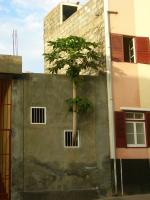 Body, consumption, sexuality, expression, festivity, communality and informality will be analyzed as the central places of the new challenges, negotiations and innovations of citizenship of contemporary young people in Cape Verde.
Body, consumption, sexuality, expression, festivity, communality and informality will be analyzed as the central places of the new challenges, negotiations and innovations of citizenship of contemporary young people in Cape Verde.
To read
01.05.2011 | by Filipe Martins
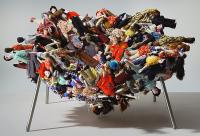 The streets of Brazil are full of startling design solutions by ordinary people driven by pure human need. Adélia Borges writes about a new exhibition space that celebrates a design culture of diversity.
The streets of Brazil are full of startling design solutions by ordinary people driven by pure human need. Adélia Borges writes about a new exhibition space that celebrates a design culture of diversity.
I'll visit
28.04.2011 | by Adélia Borges
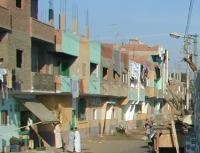 The virtual space of communication through social networks took part in the square’s new configuration, as in some way participated the space created by the window that we all opened. Even more determinant was the physical and real presence of the demonstrators and their capacity for resistance. The occupation of the square leads us to rethink public space, but the question that is imposed is what will then have to change so that Tahir Square can maintain the new configuration it conquered, a place of intervention, communication and meeting, and that it doesn’t go back to its old condition of museum space for tourists and road circulation?
The virtual space of communication through social networks took part in the square’s new configuration, as in some way participated the space created by the window that we all opened. Even more determinant was the physical and real presence of the demonstrators and their capacity for resistance. The occupation of the square leads us to rethink public space, but the question that is imposed is what will then have to change so that Tahir Square can maintain the new configuration it conquered, a place of intervention, communication and meeting, and that it doesn’t go back to its old condition of museum space for tourists and road circulation?
City
28.04.2011 | by Cristina Salvador
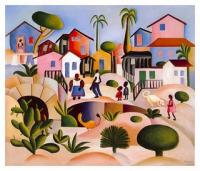 The most significant distinction in the way favela builders and architects treat space relates to temporality, since sheltering and inhabiting imply a completely different space-temporal process. It’s as if architects spatialized time, and favela builders temporalize space. This opposition becomes clear when we compare the way architects conceive space – always starting from a project, with spatial and formal projections for a near future – and the way favelas are built – where there is never a pre-established project, and the formal outline of the future construction begins to appear only when the construction process is well underway, and even then, it is never fixed or pre-defined as is the case of a traditional project.
The most significant distinction in the way favela builders and architects treat space relates to temporality, since sheltering and inhabiting imply a completely different space-temporal process. It’s as if architects spatialized time, and favela builders temporalize space. This opposition becomes clear when we compare the way architects conceive space – always starting from a project, with spatial and formal projections for a near future – and the way favelas are built – where there is never a pre-established project, and the formal outline of the future construction begins to appear only when the construction process is well underway, and even then, it is never fixed or pre-defined as is the case of a traditional project.
City
27.04.2011 | by Paola Bernstein Jacques
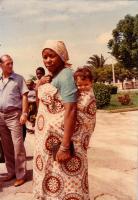 Why am I not black. Or rather, how did I end up a Mozambican?
These questions about identity are normal. They come up more often when I’m not in Mozambique due to (I assume) lack of historical knowledge. But what does a Mozambican look like? Mozambique, as a nation, didn’t exist until 1975. It was then it was born, a carrier of other nations within its borders, of ethnicities as varied as Shangana, Makonde, descendants from Swahili and Arabs from the North, descendants from Goan, Pakistani, Portuguese, Ronga and so on. With that new country came a new nationality — Mozambican.
Why am I not black. Or rather, how did I end up a Mozambican?
These questions about identity are normal. They come up more often when I’m not in Mozambique due to (I assume) lack of historical knowledge. But what does a Mozambican look like? Mozambique, as a nation, didn’t exist until 1975. It was then it was born, a carrier of other nations within its borders, of ethnicities as varied as Shangana, Makonde, descendants from Swahili and Arabs from the North, descendants from Goan, Pakistani, Portuguese, Ronga and so on. With that new country came a new nationality — Mozambican.
Face to face
27.04.2011 | by Rui Tenreiro
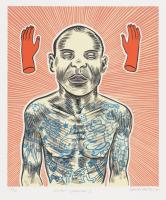 ost-independence Africa is a space of ambivalence, where the aspirations of her people are, ever so often, opposed by her own leaders and by influences from the outside. Her wealth is largely crippled by the West’s use of financial control to make the continents resources available to its own ends. And in recent years, China’s rapidly intensifying economic influence in Africa has become yet another reminder of a new global actor that feeds on globalization and the resultant economic and political expansion, and who has not shied away from reaching out its tentacles to areas troubled by conflict and weak governance. In this conflicting terrain, we must carry with us the words of Walter Benjamin: “The tradition of the oppressed teaches us that the “state of emergency” in which we live is not an exception but a rule.”
ost-independence Africa is a space of ambivalence, where the aspirations of her people are, ever so often, opposed by her own leaders and by influences from the outside. Her wealth is largely crippled by the West’s use of financial control to make the continents resources available to its own ends. And in recent years, China’s rapidly intensifying economic influence in Africa has become yet another reminder of a new global actor that feeds on globalization and the resultant economic and political expansion, and who has not shied away from reaching out its tentacles to areas troubled by conflict and weak governance. In this conflicting terrain, we must carry with us the words of Walter Benjamin: “The tradition of the oppressed teaches us that the “state of emergency” in which we live is not an exception but a rule.”
To read
25.04.2011 | by Stina Edblom
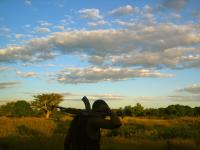 In the country with a Kalashnikov in its flag we were walking a long way to meet a musician and record some of his tunes for the soundtrack to a documentary. Tobias Dzandiwandira is a practically unknown talent, for he lives with his large family an hour and a half away from the nearest road in Mozambique’s centre-west, close to the border with Zimbabwe.
In the country with a Kalashnikov in its flag we were walking a long way to meet a musician and record some of his tunes for the soundtrack to a documentary. Tobias Dzandiwandira is a practically unknown talent, for he lives with his large family an hour and a half away from the nearest road in Mozambique’s centre-west, close to the border with Zimbabwe.
I'll visit
21.04.2011 | by Nuno Milagre
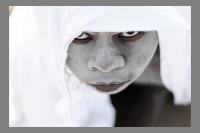 Mário Macilau is a photographer (of fragments) of reality. Macilau is a teller of stories and as he narrates he meditates through his images on the social, political and economic environment in his country and in the world, which he explores in its unfeigned naked and raw form. As he states himself, he does not stage or create the photographic moment. His images are instantaneous. He does not seek them, he finds them. Camera in hand, he approaches the countless anonymous people who appear in his work – it is the movement of contemporary man and his relationship with space that interest him.
Mário Macilau is a photographer (of fragments) of reality. Macilau is a teller of stories and as he narrates he meditates through his images on the social, political and economic environment in his country and in the world, which he explores in its unfeigned naked and raw form. As he states himself, he does not stage or create the photographic moment. His images are instantaneous. He does not seek them, he finds them. Camera in hand, he approaches the countless anonymous people who appear in his work – it is the movement of contemporary man and his relationship with space that interest him.
Face to face
11.04.2011 | by Sílvia Vieira
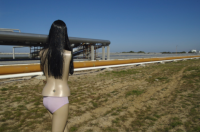 Interview carried out by online chat, at various times and on various days, punctuated by continual breaks in the Internet connection that maps out the transatlantic and ex-colonial triangulation between Luanda, Angola – Kiluanji Kia Henda’s home, a city that I have never visited; São Paulo, Brazil – my temporary home and the place where I first met Kiluanji, a place that is close to the origin of the series presented here; Lisbon, Portugal – my permanent home, source of the schedule drawn up by my computer and Kiluanji’s ex-temporary home.
Interview carried out by online chat, at various times and on various days, punctuated by continual breaks in the Internet connection that maps out the transatlantic and ex-colonial triangulation between Luanda, Angola – Kiluanji Kia Henda’s home, a city that I have never visited; São Paulo, Brazil – my temporary home and the place where I first met Kiluanji, a place that is close to the origin of the series presented here; Lisbon, Portugal – my permanent home, source of the schedule drawn up by my computer and Kiluanji’s ex-temporary home.
Face to face
08.04.2011 | by Lígia Afonso
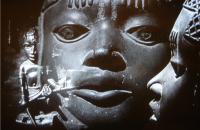 Documentary cinema in Africa more or less follows the same trajectory as African Literature. The methodologies and forms of expression are certainly different but the discourse on Africa remains the same, evolving with the continent’s history. In the 1920s, colonial reportage and ethnographic films were already a success. Africa and Africans were filmed subjects.
Documentary cinema in Africa more or less follows the same trajectory as African Literature. The methodologies and forms of expression are certainly different but the discourse on Africa remains the same, evolving with the continent’s history. In the 1920s, colonial reportage and ethnographic films were already a success. Africa and Africans were filmed subjects.
Afroscreen
08.04.2011 | by Rufin Mbou Mikima
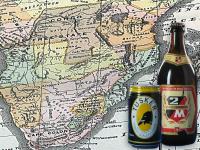 We decided to stick around for a beer at the end of a shooting day for the movie “The Hero” directed by Zezé Gamboa. We were on the Island of Luanda, where we had filmed from two in the afternoon to one in the morning. We stopped the car next to a stand, leaving the door open to keep listening to the pirated cassette playing on the car radio. In the group, the Angolans drink imported beer, Super Bock; the foreigners drink national beer, Cuca, each one savouring the exotic freshness of its own point of view while we talk in the shadow of a tranquil weekday dawn.
We decided to stick around for a beer at the end of a shooting day for the movie “The Hero” directed by Zezé Gamboa. We were on the Island of Luanda, where we had filmed from two in the afternoon to one in the morning. We stopped the car next to a stand, leaving the door open to keep listening to the pirated cassette playing on the car radio. In the group, the Angolans drink imported beer, Super Bock; the foreigners drink national beer, Cuca, each one savouring the exotic freshness of its own point of view while we talk in the shadow of a tranquil weekday dawn.
I'll visit
03.04.2011 | by Nuno Milagre
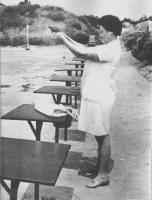 The air erodes
Its shadow quivers
My land is lost sand
My skin a black target
A rough weave of laments
How could anyone believe that a mother
is anything but love?
The air erodes
Its shadow quivers
My land is lost sand
My skin a black target
A rough weave of laments
How could anyone believe that a mother
is anything but love?
Mukanda
16.03.2011 | by Céléstin Monga
 Passando tempo no mercado, a Feira do Ponto da cidade de São Tomé, Olavo pintou várias séries de quadros com vendedoras. Falava com elas enquanto desenhava esboços, retratou-as na sua vida pública de trabalho. Na tela, as mulheres, cestos e bacias à cabeça, crianças nas costas, a luta diária: ganhar a vida, cuidar da família. O confronto com a vivência quotidiana das vendedoras sobrepôs-se ao seu impacto figurativo e os contornos das mulheres emanciparam-se para delinear os estreitos corredores do mercado. As mulheres moldaram-se nos trajectos repisados por elas todos os dias, e mais tarde os trajectos devolveram-se às mulheres na multiplicidade dos seus caminhos interiores, mais extensos e complexos.
Passando tempo no mercado, a Feira do Ponto da cidade de São Tomé, Olavo pintou várias séries de quadros com vendedoras. Falava com elas enquanto desenhava esboços, retratou-as na sua vida pública de trabalho. Na tela, as mulheres, cestos e bacias à cabeça, crianças nas costas, a luta diária: ganhar a vida, cuidar da família. O confronto com a vivência quotidiana das vendedoras sobrepôs-se ao seu impacto figurativo e os contornos das mulheres emanciparam-se para delinear os estreitos corredores do mercado. As mulheres moldaram-se nos trajectos repisados por elas todos os dias, e mais tarde os trajectos devolveram-se às mulheres na multiplicidade dos seus caminhos interiores, mais extensos e complexos.
Face to face
15.03.2011 | by Nuno Milagre
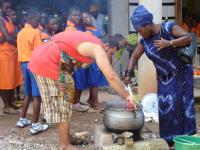 While it is true that African art largely takes place in the Northern hemisphere, and while its major (political, financial, philosophical, aesthetic etc.) advances have taken place here, it is true that the African continent is increasingly asserting itself as an exceptional relational space for cultural agents.
While it is true that African art largely takes place in the Northern hemisphere, and while its major (political, financial, philosophical, aesthetic etc.) advances have taken place here, it is true that the African continent is increasingly asserting itself as an exceptional relational space for cultural agents.
Face to face
28.02.2011 | by Marta Mestre
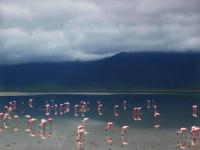 Here in Ngorongoro, the flamingos spread across the lake’s low waters, walk erratic steps and peck the mud with greed. Reflections of the flamingos and of the sky, punctuated by clouds, paint the water in blue, rose and white. The wind disperses the clouds ceasing their self-admiration on the mirror; the afternoon is going to heat up.
In northern Tanzania, West of the Kilimanjaro and on the way to the famous Serengeti National Park, exists one of the bigger cauldrons in the world: the Crater of Ngorongoro.
Here in Ngorongoro, the flamingos spread across the lake’s low waters, walk erratic steps and peck the mud with greed. Reflections of the flamingos and of the sky, punctuated by clouds, paint the water in blue, rose and white. The wind disperses the clouds ceasing their self-admiration on the mirror; the afternoon is going to heat up.
In northern Tanzania, West of the Kilimanjaro and on the way to the famous Serengeti National Park, exists one of the bigger cauldrons in the world: the Crater of Ngorongoro.
I'll visit
22.02.2011 | by Nuno Milagre
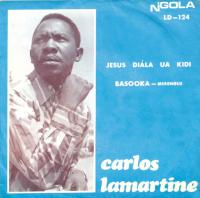 It’s 1943 and Benguela is thriving. As the famous railway heads inland, the town readies itself for a make-over: there is a modern development plan afoot. Progress is the watchword. In one of its streets, an important event is about to occur: Dona Ludovina (a singer of some style, they say), the wife of Sebastião José da Costa, an employee at the Post Office and a former journalist, is about to give birth to a child she will call Carlos Lamartine. Benguela waits, with open arms, to welcome a great son, one who will be a major figure in Angolan music and the author of timeless melodies.
It’s 1943 and Benguela is thriving. As the famous railway heads inland, the town readies itself for a make-over: there is a modern development plan afoot. Progress is the watchword. In one of its streets, an important event is about to occur: Dona Ludovina (a singer of some style, they say), the wife of Sebastião José da Costa, an employee at the Post Office and a former journalist, is about to give birth to a child she will call Carlos Lamartine. Benguela waits, with open arms, to welcome a great son, one who will be a major figure in Angolan music and the author of timeless melodies.
Stages
18.02.2011 | by Mário Rui Silva
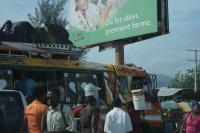 “Haïti plus fort avec le jazz”, “Haiti stronger with jazz” is the theme of International Jazz Festival of Port-au-Prince that will take place in this city between the 19th and the 26th of February.
“Haïti plus fort avec le jazz”, “Haiti stronger with jazz” is the theme of International Jazz Festival of Port-au-Prince that will take place in this city between the 19th and the 26th of February.
Stages
17.02.2011 | by Sílvia Norte
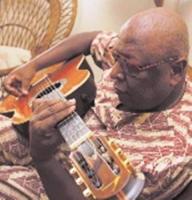 The saucepan lids turned like records on an imaginary pick-up. If you closed your eyes, you could hear the sounds reverberating everywhere. Then came the sessions when other rhythms were played - mornas and coladeras on the guitar of a cousin who “sort of lived in the house.” The gramophones and the radios had also been sort of living there for a long time. But that was at the start. Aftyer that there was going to be the Clube Marítimo Africano, the final year parties, the focus on a big new star and then recognition as a major figure in Angolan music: Filipe Zau.
The saucepan lids turned like records on an imaginary pick-up. If you closed your eyes, you could hear the sounds reverberating everywhere. Then came the sessions when other rhythms were played - mornas and coladeras on the guitar of a cousin who “sort of lived in the house.” The gramophones and the radios had also been sort of living there for a long time. But that was at the start. Aftyer that there was going to be the Clube Marítimo Africano, the final year parties, the focus on a big new star and then recognition as a major figure in Angolan music: Filipe Zau.
Stages
16.02.2011 | by Mário Rui Silva
 For the first time in decades, Tunisia is free of one-man rule. The extraordinary events of December 2010 and January 2011 have been nothing less than a political revolution: The consistent pressure of popular fury forced President Zine El Abidine Ben Ali first to make an unprecedented promise to relinquish power; then pushed him to step down; and finally halted an attempt at unconstitutional transfer of power, setting the stage for elections to be held at an undetermined date in the near to mid-term future.
For the first time in decades, Tunisia is free of one-man rule. The extraordinary events of December 2010 and January 2011 have been nothing less than a political revolution: The consistent pressure of popular fury forced President Zine El Abidine Ben Ali first to make an unprecedented promise to relinquish power; then pushed him to step down; and finally halted an attempt at unconstitutional transfer of power, setting the stage for elections to be held at an undetermined date in the near to mid-term future.
I'll visit
23.01.2011 | by Nadia Marzouki
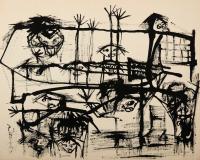 Pancho Guedes (born in 1925), architect, painter, sculptor, collector and patron, played an important cultural role during the years he lived in Mozambique. This is true because of his own work, which brought together several worlds, as well as for his role as mediator between artists of all traditions, the wider public (local and international), and the institutional artistic world, which he had access to at the time.
Pancho Guedes (born in 1925), architect, painter, sculptor, collector and patron, played an important cultural role during the years he lived in Mozambique. This is true because of his own work, which brought together several worlds, as well as for his role as mediator between artists of all traditions, the wider public (local and international), and the institutional artistic world, which he had access to at the time.
To read
20.01.2011 | by Alda Costa